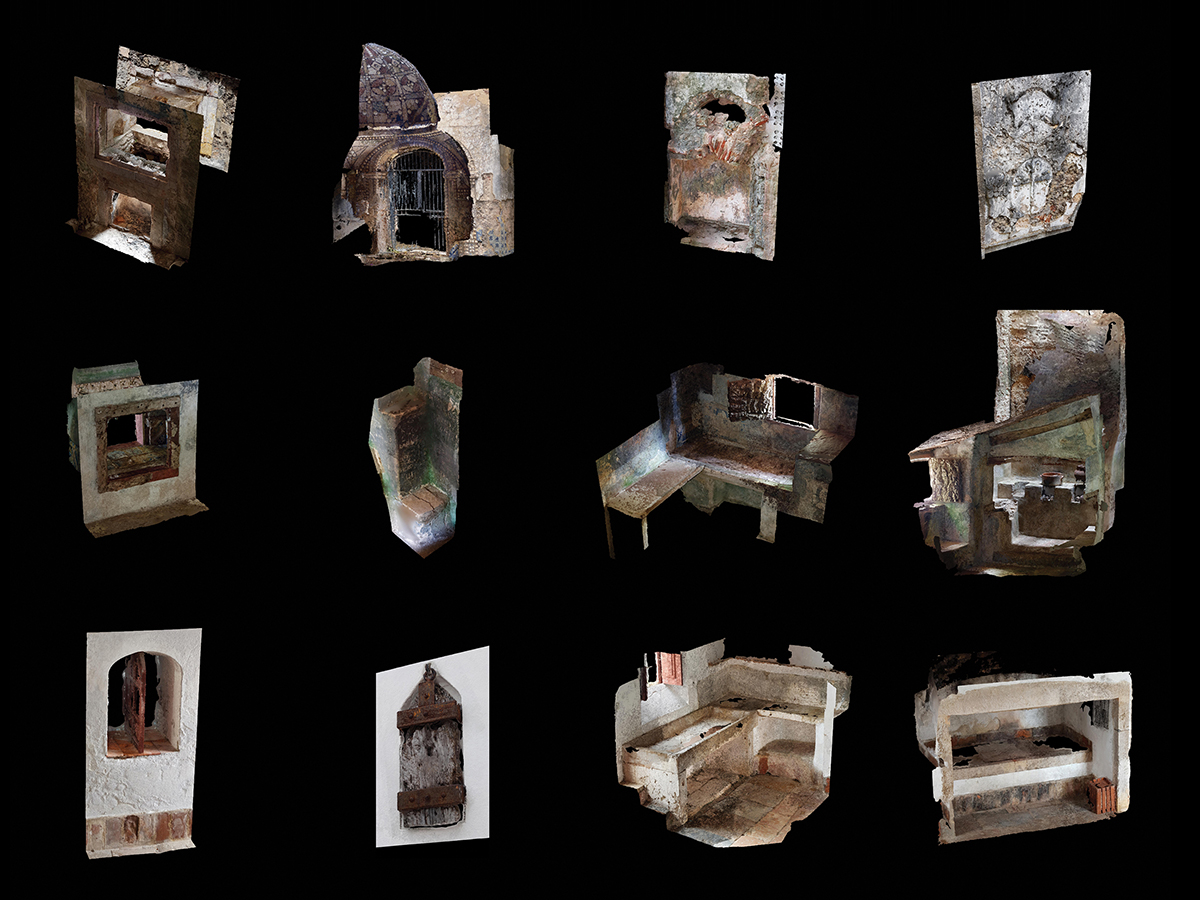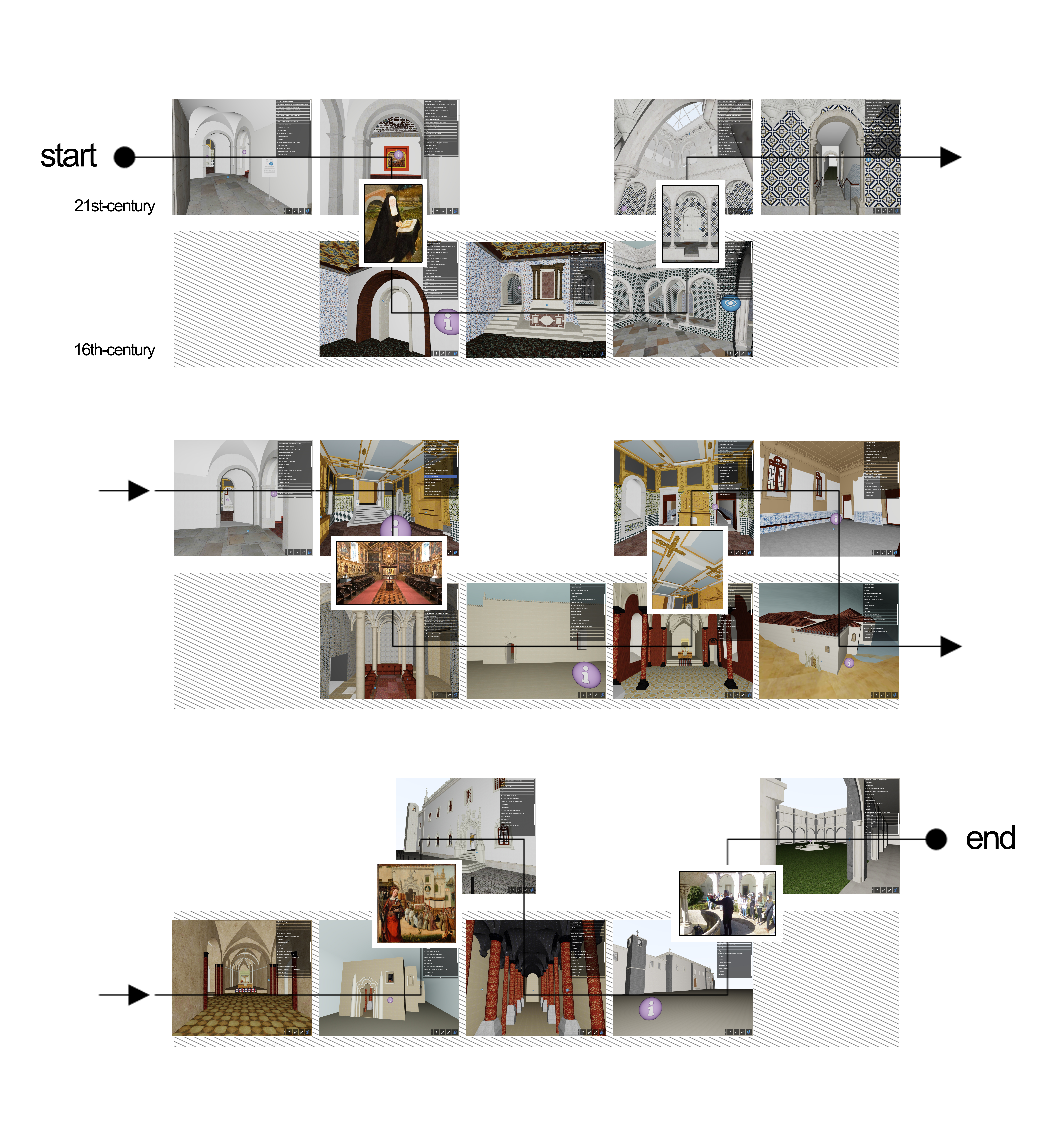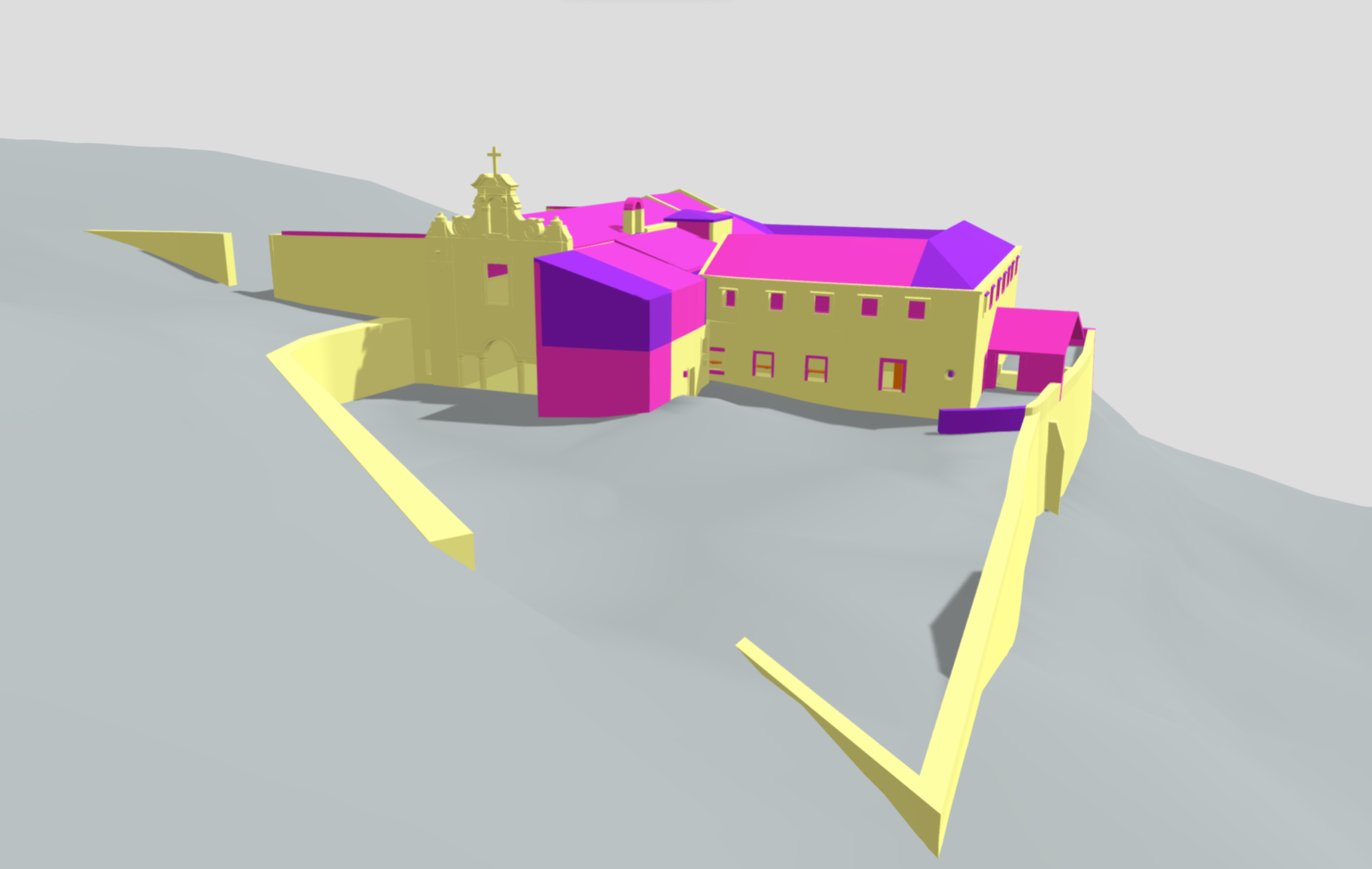
From Text to Model: Translating the Estatutos da Província de Santa Maria da Arrábida
Jesse Rafeiro a, Ana Tomé b, João Luís Inglês Fontes c
a Carleton Immersive Media Studio, Carleton University,
1125 Colonel By Drive Ottawa, ON K1S5B6, [email protected]
b Instituto Superior Técnico, Universidade de Lisboa,
Av. Rovisco Pais, 1 1049-001 Lisboa, [email protected]
c Faculdade de Ciências Sociais e Humanas, Universidade NOVA de Lisboa,
Avenida de Berna, 26-C / 1069-061 Lisboa, [email protected]
A primary text for understanding the architecture of Franciscan convents in Portugal is the 17th century Estatutos da Província de Santa Maria da Arrábida that outlines rules to the construction of convents belonging to the Arrábida province. Beyond articulating the conduct of daily life within the convents, the rules also describe the required spaces of the building accompanied by maximum dimensions to maintain consistent austerity across the order. The research presented in this paper discusses ongoing approaches to visualize these rules from an architectural lens in order to better understand the contents of the document both in-themselves and to how they manifest themselves in specific instances of convents across the province. One approach of the study combines text analysis and visualization through digital modelling and 3D printing. By first visualizing the spaces and relations of the ideal convent as described through a set of volumetric digital models, a comparison was later made between the dimensions and arrangement of these ideals to specific instances found in convents of the same time period, region and Franciscan ideology. Another approach of the study uses photographic and photogrammetric surveys of details and spaces found across four convents of the Arrábida province in order to compare and visualize the scale and configuration of common elements – both described by the text and not. Overall, the paper also aims to demonstrate how new tools in digital heritage can assist in the study and dissemination of the otherwise invisible dimensions of heritage buildings.
Keywords: Virtual Reconstruction, Architectural Heritage, Heritage documentation, HBIM, Photogrammetry, Digital Modelling, 3D Printing, Capuchos Convents
Florence Heri-tech: the Future of Heritage Science and Technologies
14-16 Oct 2020, Florence, Italy






